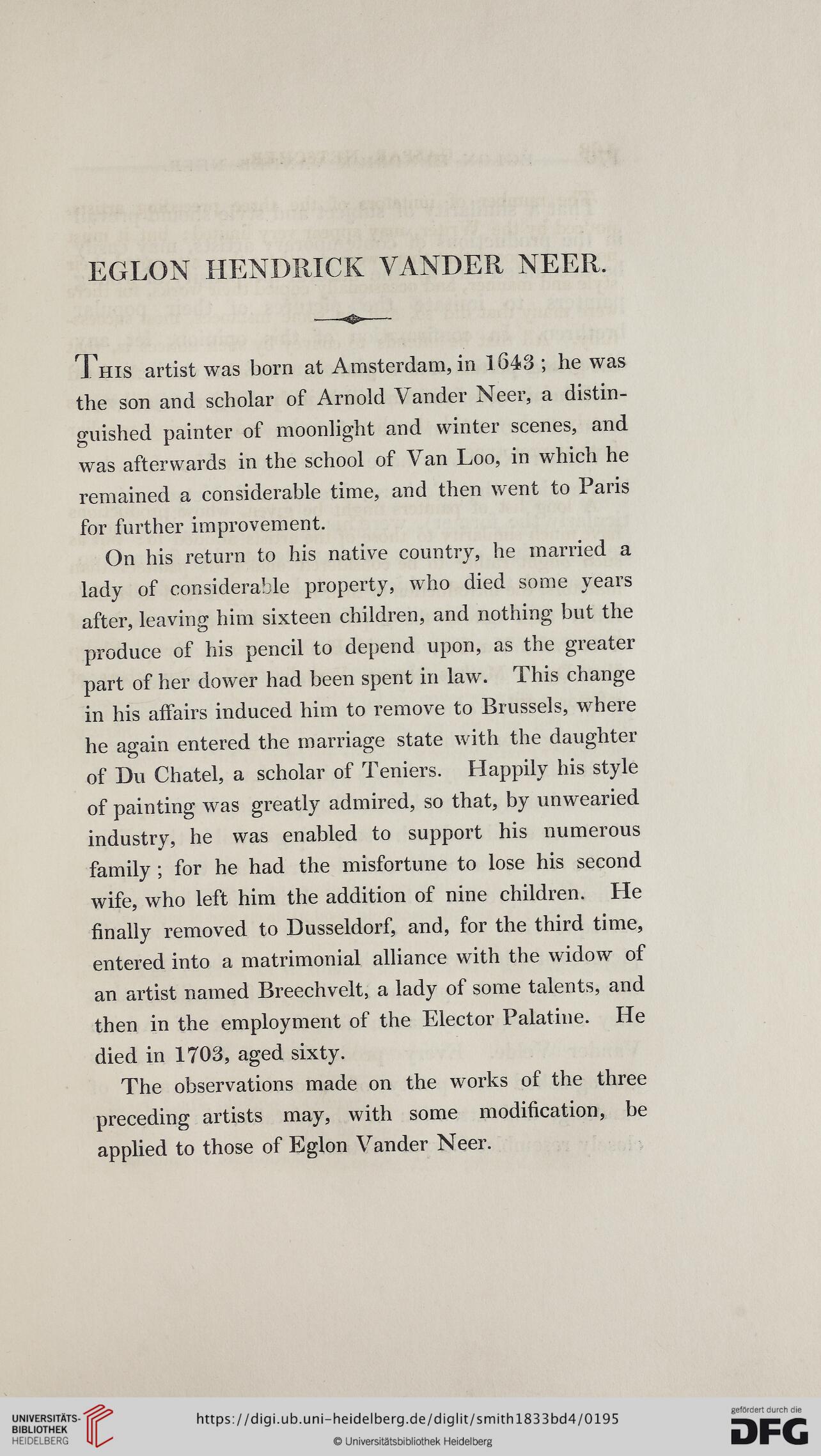EGLON HENDRICK VANDER NEER.
Thts artist was born at Amsterdam, in 1643 ; he was
the son and scholar of Arnold Vander Neer, a distin-
guished painter of moonlight and winter scenes, and
was afterwards in the school of Van Loo, in which he
remained a considerable time, and then went to Paris
for further improvement.
On his return to his native country, he married a
lady of considerable property, who died some years
after, leaving him sixteen children, and nothing but the
produce of his pencil to depend upon, as the greater
part of her dower had been spent in law. This change
in his affairs induced him to remove to Brussels, where
he again entered the marriage state with the daughter
of Du Chatel, a scholar of Teniers. Happily his style
of painting was greatly admired, so that, by unwearied
industry, he was enabled to support his numerous
family ; for he had the misfortune to lose his second
wife, who left him the addition of nine children. He
finally removed to Dusseldorf, and, for the third time,
entered into a matrimonial alliance with the widow of
an artist named Breechvelt, a lady of some talents, and
then in the employment of the Elector Palatine. He
died in 1703, aged sixty.
The observations made on the works of the three
preceding artists may, with some modification, be
applied to those of Eglon Vander Neer.
Thts artist was born at Amsterdam, in 1643 ; he was
the son and scholar of Arnold Vander Neer, a distin-
guished painter of moonlight and winter scenes, and
was afterwards in the school of Van Loo, in which he
remained a considerable time, and then went to Paris
for further improvement.
On his return to his native country, he married a
lady of considerable property, who died some years
after, leaving him sixteen children, and nothing but the
produce of his pencil to depend upon, as the greater
part of her dower had been spent in law. This change
in his affairs induced him to remove to Brussels, where
he again entered the marriage state with the daughter
of Du Chatel, a scholar of Teniers. Happily his style
of painting was greatly admired, so that, by unwearied
industry, he was enabled to support his numerous
family ; for he had the misfortune to lose his second
wife, who left him the addition of nine children. He
finally removed to Dusseldorf, and, for the third time,
entered into a matrimonial alliance with the widow of
an artist named Breechvelt, a lady of some talents, and
then in the employment of the Elector Palatine. He
died in 1703, aged sixty.
The observations made on the works of the three
preceding artists may, with some modification, be
applied to those of Eglon Vander Neer.




